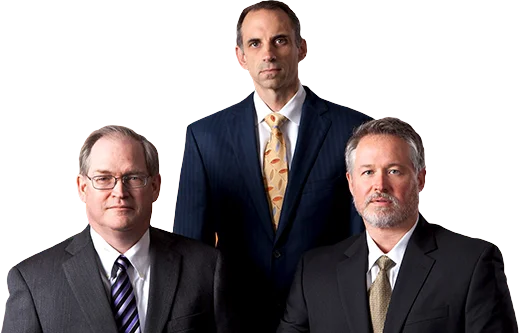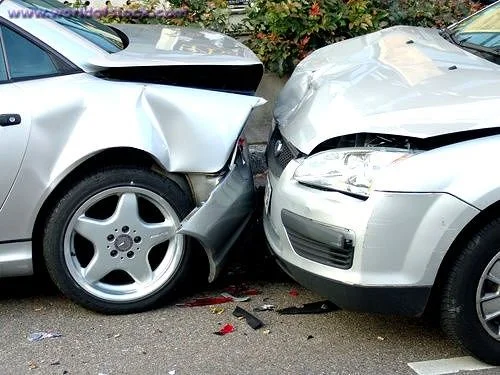Motor Vehicle Accidents Are A Significant Source Of Potential Liability For Most Businesses By Samuel B. Burke


This past year injuries and deaths caused by motor vehicle accidents rose for the first time in over a decade. When discussing this issue with a local State Farm agent, Matt Portz, Mr. Portz told me that State Farm alone processes 42,000 auto accident claims per day. The recent rise in auto accidents related to deaths and injuries is likely due to lower gas prices (leading to more cars on the road) and possibly to an increase in distracted driving (cell phone use behind the wheel). In their day to day operations, businesses are exposed to multiple risks that could lead to lawsuits. However, the risk of litigation arising from auto accidents is often overlooked.
No matter the type of business you operate, when your employees are driving their car in the course and scope of their employment, you as their employer can be responsible for injuries resulting from their negligence. This is called vicarious liability. Employers who do not carry workers compensation insurance can also be liable for their employee’s injuries if those injuries are the result of the employer’s negligence.
Let’s imagine a worst case scenario. You need to get a product to a client by 5:00 p.m. At 4:45 p.m., you finally have it ready. The customer is across town. It usually takes 20 minutes to get there. You tell your employee the product has to get there by 5:00 p.m., and you hand your employee the keys to your car. Trying to follow your instructions, the employee runs a red light and has an accident which causes significant injuries to both your employee and the driver of the car he hit. Both your employee and the driver of the other car are hospitalized for a few days and miss several weeks of work. Without the proper protections in place, an accident like this could hurt or bankrupt many small businesses who could be liable for the injuries to both its employee and the driver of the car hit by the business’s employee.
In this scenario, what are the right protections? Generally, the answer is not a good lawyer, but the right insurance products. First, if they carry worker’s compensation insurance, employers are not liable to their employees for injuries those employees suffer in the workplace or in the course and scope of their employment. In the above scenario, it is possible the employer who told the employee he needed to get across town in 15 minutes when the employer knew the trip would take 20 minutes could be found to have negligently instructed the employee. If the employer carries no worker’s compensation insurance, the employee’s own negligence in running the red light could be ignored and the employer held responsible for one hundred percent of the damages, if it were determined the employer was negligent in instructing the employee to rush across town.
Generally, worker’s compensation insurance provides payments to injured employees that covers medical expenses, lost earnings, and lost earning capacity. Further, if an employer has worker’s compensation insurance, the employee is barred, in almost all circumstances, from suing their employer for work related injuries. There are drawbacks to worker’s compensation insurance. It can be costly and not all healthcare providers accept worker’s compensation insurance. However, the cost is low for many businesses and the reduction in potential liability can be well worth the cost. Merely being involved in a lawsuit can cost small businesses tens of thousands of dollars and these legal expenses are rarely in the budget or business plan.
As for the injuries to the driver of the car your employee hit, it is important that you have auto insurance covering your business. This can be purchased in conjunction with commercial general liability coverage or separately. It is important to know that commercial general liability coverage will likely not cover claims that your employee or a third party would make in the event of an auto accident. You need to have separate auto coverage to protect against third party claims. Also, because your business could be liable for accidents in the course and scope of you and your employees work for the business, the limits of coverage need to be sufficient to protect not only you individually but to protect the business. For most small business combined coverage (auto coverage and excess coverage, often called umbrella coverage) of one million dollars will be sufficient. If your business has a value exceeding one million dollars, consider additional excess coverage. Often, people assume this amount of coverage will be cost prohibitive. However, usually the cost to increase property damage and injury limits on auto policies is a few dollars a month. In other words, the cost to most businesses is negligible.
In addition to making sure your insurance has sufficient limits, you need to make sure you have the proper type of policy language. In our example, the employee borrowed your car. In this scenario, you will need to have had permissive use coverage. “Permissive use” just means that the insurance applies to persons driving your car with your permission. Some policies, especially policies marketed at the lowest costs, will not include permissive use v coverage. This can have significant unintended consequences if you allow employees to operate your car for work related purposes. It is also recommended for businesses to obtain policy riders for non-owned and hired auto coverage. This ensures that if the employee in our scenario had been in his own car (which might not be a covered auto identified on the business’s policy) or a rental car, the business’s auto policy would still provide coverage.
Another area of coverage that is often overlooked is uninsured and/or underinsured motorist coverage. Texas has very low legal limits for auto liability coverage. Twenty-five thousand dollars in coverage is all that is required. This amount of coverage will not be sufficient in the event of any significant injury. Uninsured/ Uninsured coverage applies when the responsible party has no insurance or insufficient coverage to pay for the damages and injuries caused by the responsible third party. For example, in our earlier scenario, if we reverse the cause of the accident and your employee had been hit by a driver running a red light, and that driver had no insurance, the businesses uninsured motorist coverage would be available to pay for your employee’s injuries and damages and property damage to your company vehicle.
Another important consideration related to auto accidents and auto insurance is the timing and types of settlements that occur. In the case of any claim on an auto liability policy, the insurance company responsible for paying the claim will expect to make only one payment, and that payment will be in exchange for a release of any and all claims related the accident. This means that the injured party needs to wait until they have received all the medical care necessary for the treatment of the accident related injuries and knows what the long term effects of the injury will be on earning capacity. If the injured party has no short term disability insurance (or other income replacing coverage) and lacks health insurance, waiting until the treatment is over and a full recovery has been made can cause great financial stress. However, auto policies come with coverage that can help bridge this gap.
Unless declined in writing, auto coverage comes with personal injury protection (PIP) coverage. This coverage is available to the covered individual or the employee of a covered employee in the event of an accident caused by the fault of another. PIP coverage can be used (up to 80% of the coverage, which is usually available in the amounts of $2,500, $5,000, or $10,000) to replace lost earnings and to pay medical bills, and can be paid out incrementally as the losses are occurring. This source of funds can allow a seriously injured person to pay medical bills and replace income during a sustained recovery and prevent that person from being in the position of trying to compromise a claim before they are sure of their losses because financially they cannot wait any longer for the settlement. When discussing PIP coverage with an insurance agent, be aware that PIP coverage is different than Medical Payments (MedPay) coverage and generally PIP is superior coverage. If your agent is pushing MedPay coverage, ask him or her to explain the advantages and disadvantages of that coverage versus PIP in your particular financial and business situation.
We almost all have insurance and have had auto insurance most of our adult lives. However, the risks auto accidents posed to our individual and business’s financial security is often underappreciated. As a result, the insurance available to mitigate those risks is often not fully understood and not tailored to the needs our and our business’s needs. If you have not considered the risks an auto accident poses to your business (you’ve been on cruise control so to speak), you should sit down and review your coverages and discuss them with an attorney or insurance agent in the near future.
Samuel B. Burke is board certified in Civil Trial Law by the Texas Board of Legal Specialization and can be reached at [email protected] or www.dentonlaw.com.

